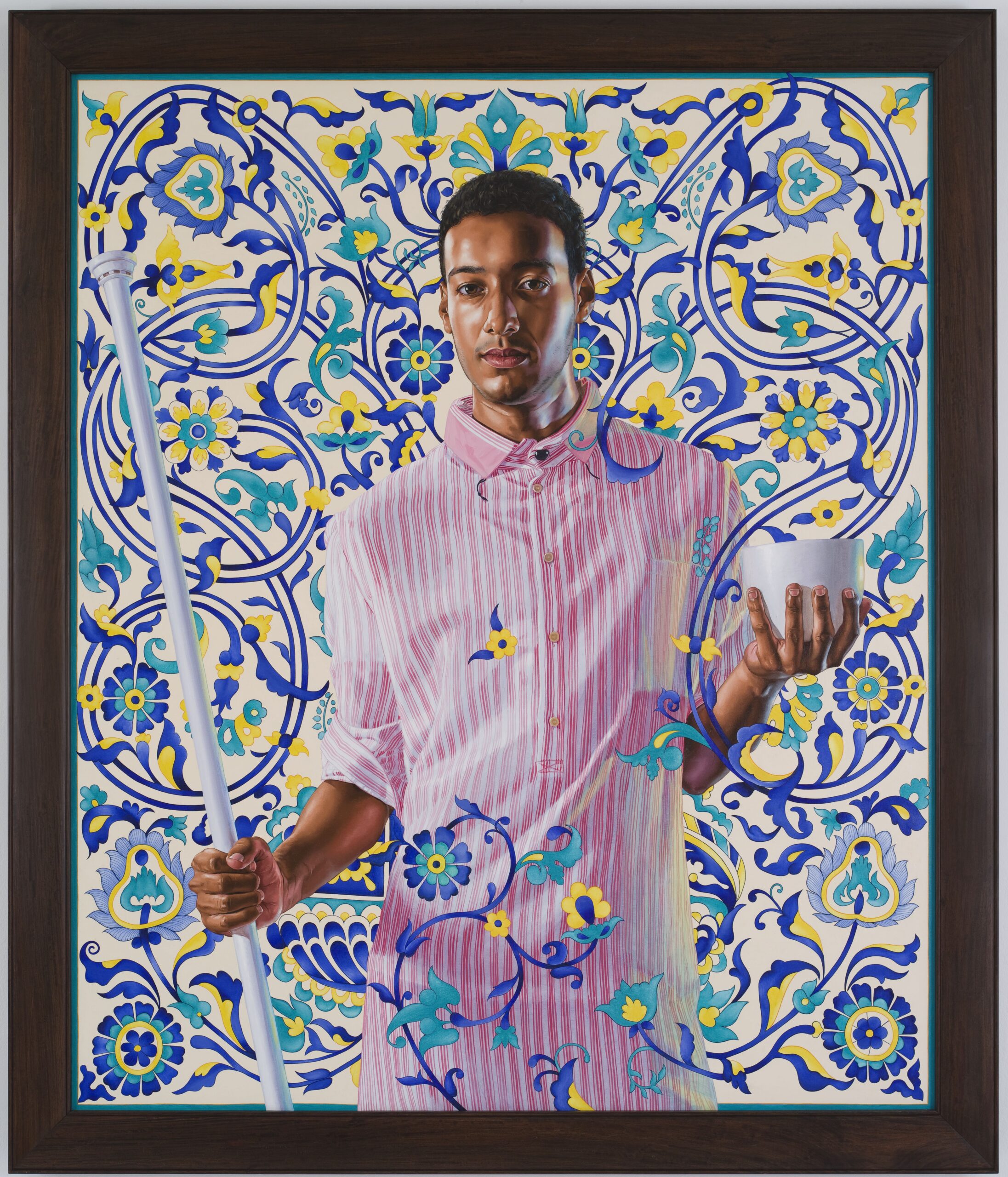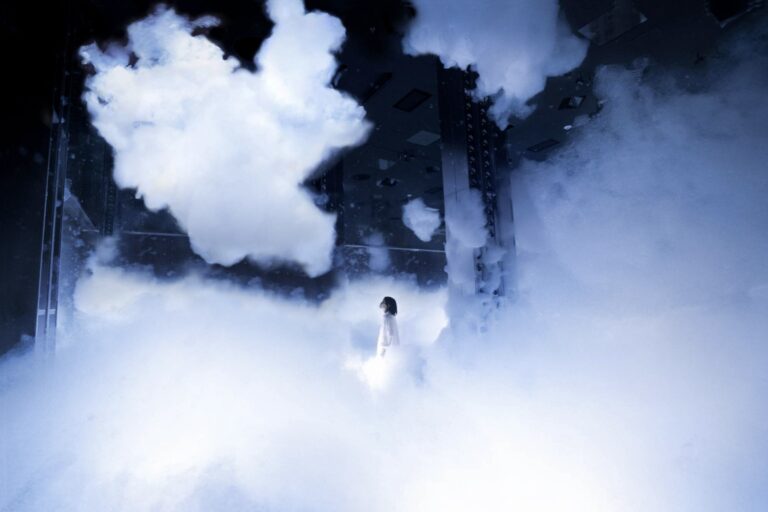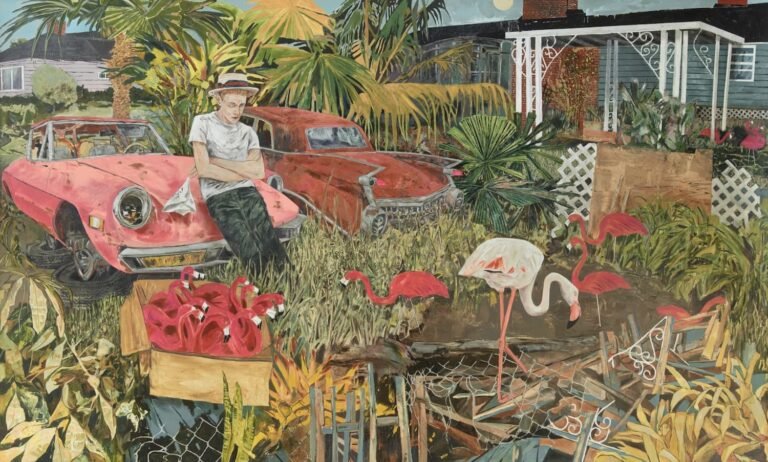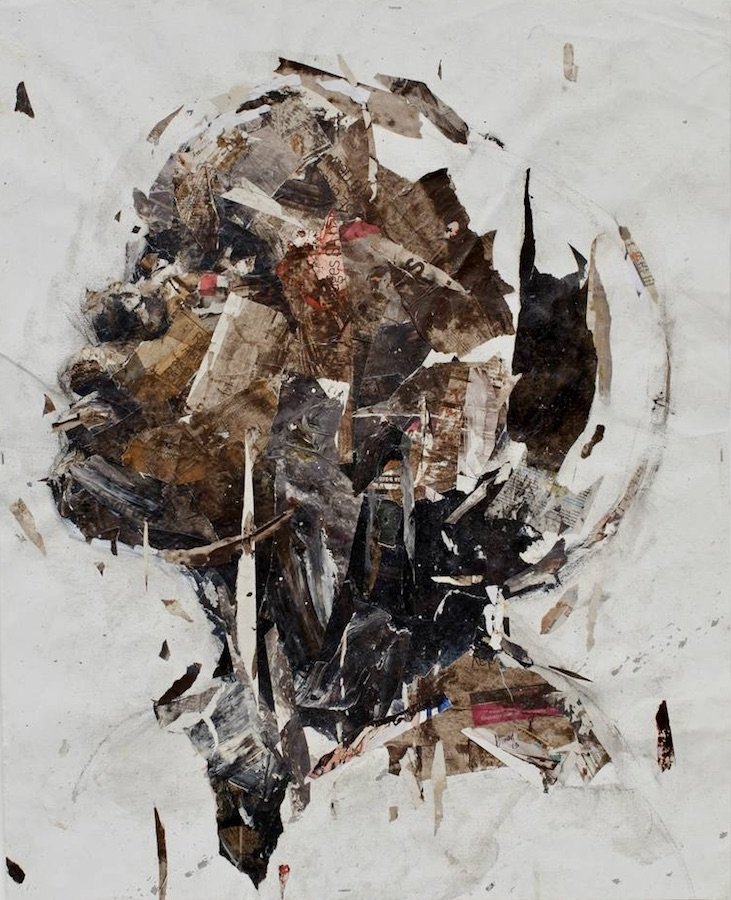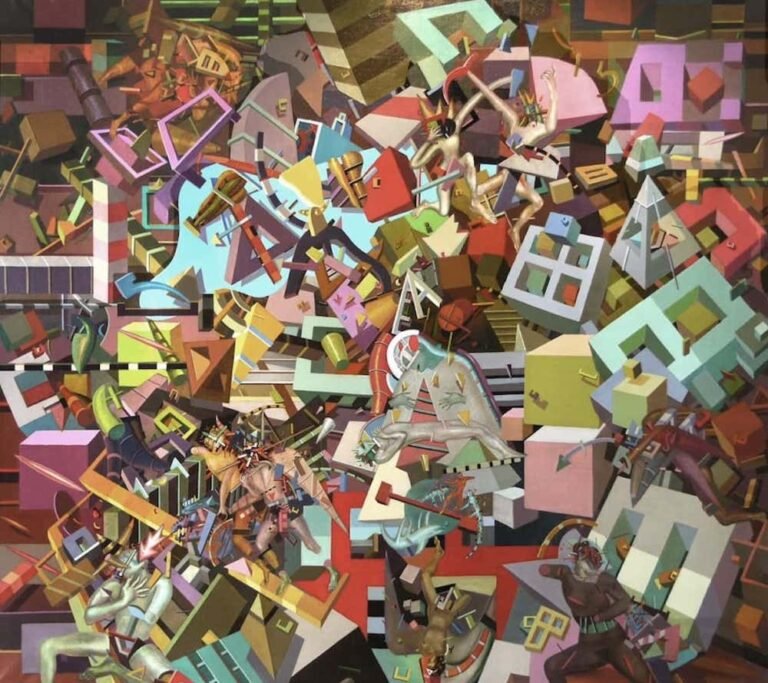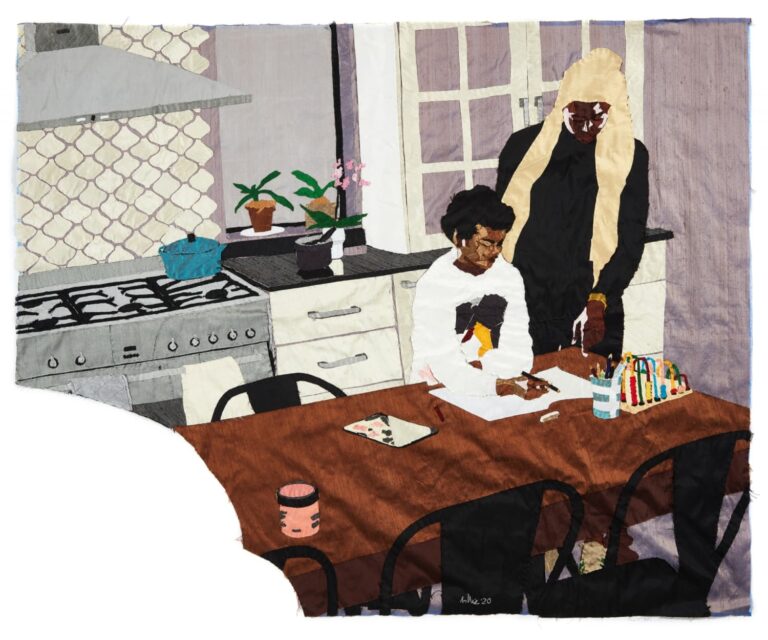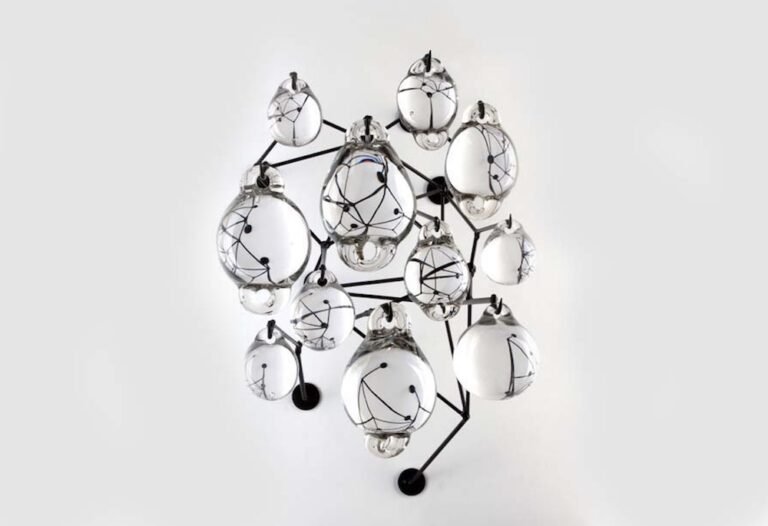Kehinde Wiley’s art investigates the stereotypes pervading Western culture with the result being an eye-opening experience on the perceptions of gender appearance, sexuality, identity and race, whilst working to diffuse the strength of misguided and aged viewpoints. Skilled in many mediums, Wiley’s work ranges from sculptures, stained-glass to traditional paintings and always carries with it a powerful message, such as upending views on class, addressing figures in iconography, to welcoming the softer side of masculinity with floral backgrounds that often merge with the models. These textural backgrounds being deliberately unidentifiable; causing the model to be highlighted away from any specific location, for even with such rich warm backgrounds your eyes never stray from the beautiful portrait of the person in question.
Initially most of the models in Wiley’s work were men, identifying and seeing a connection to himself in his work, whilst also commenting on the lack, or non-existence, of paintings in museums that showed African-American men in postures or roles of stature. His contemporary work highlighting this with a mimicry of the Old Masters’ paintings; reproducing the models’ positions in portraiture – riding horses, military stances and more, while including today’s modern voice through the models’ clothing and appearance (e.g. goatees).
In more recent years Wiley’s work has expanded to include a focus on the portraits of African-American women, his style retaining the message of missing figures in paintings, the models posed to be like the society women painted by Gainsborough, John Singer Sargent and Jacques-Louis David etc. The work entitled An Economy of Grace focusing on African-American women in postures of power, respect and admiration within the history of art, such as with the piece ‘Mrs. Waldorf Astor’.
 Kehinde Wiley, Mrs. Waldorf Astor, 2012. © Kehinde Wiley. Courtesy of Sean Kelly Gallery, New York.
Kehinde Wiley, Mrs. Waldorf Astor, 2012. © Kehinde Wiley. Courtesy of Sean Kelly Gallery, New York.
Wiley’s palette only knows the brightest of paints, their vividness being a part of the works’ great allure. The backgrounds’ texture complementing the models and yet still standing strikingly away from it, which is a marriage most comfortable within Wiley’s technique, with a partnership of traditional to contemporary art. For example, the photorealism of Wiley’s portraits versus the backgrounds’ styles of art & crafts, Islamic architecture and West-African textiles, each overlapping in harmony.
There are many thought-provoking collections in Wiley’s work that often infuse a sense of history and cultural identity. In one of the most impactful and highly acclaimed collections, The World Stage, Wiley has selected countries from around the world – based in part on their international impact and socio-political commentary – and within this situated models whose postures were deliberately chosen to highlight the history of the respective countries as seen in past art. Even the backgrounds, almost tactical in appearance, are based-on or inspired by the countries’ traditional objects and culture. This can be seen with the featured image ‘Emperor Napoleon I, 1912-1256’.
 Kehinde Wiley, Ships on a Stormy Sea (Jean Julio Placide), 2017. © Kehinde Wiley. Courtesy of Stephen Friedman Gallery, London.
Kehinde Wiley, Ships on a Stormy Sea (Jean Julio Placide), 2017. © Kehinde Wiley. Courtesy of Stephen Friedman Gallery, London.
Continuing to engage the public in socio-political commentary, Wiley’s art and subjects are ever expanding, with one of his most recent bodies of work, In Search of the Miraculous looking at historical landscapes within European art and its style of Romanticism. Here, Wiley plays with the usual courageous scenes of mankind’s fights, struggles and triumphs against nature such as mountains and turbulent seas, but modernises it. The figures are from today’s world with them wearing modern clothing such as t-shirts and jeans, and in the hand of one model is a drink’s bottle, meanwhile those who were asked to model live on remote islands. For the meaning of this series is to not only investigate historical western paintings, but to also challenge and question 21st century migration as countries around the world seek to cut themselves off. An example of this series can be seen above in ‘Ships on a Stormy Sea’.
Wiley’s work focuses the viewers’ attention to see the indifferences in many areas of discrimination, and not just in the modern society of today, but in the history of art, working to reform it, and to hopefully act as inspiration for many more artists to come.
Through Wiley’s visual messages, he invites the audience to look both internally and externally at the society we are a part of.

